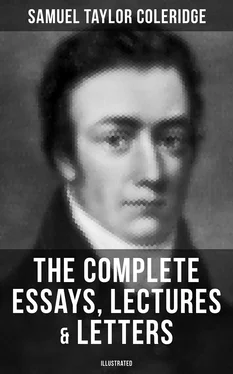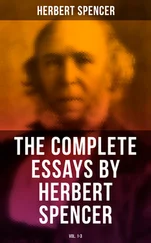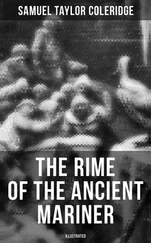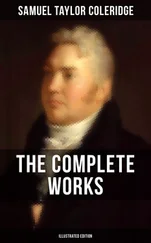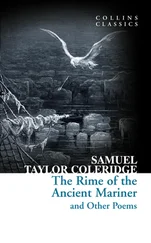I refer the reader to the exquisite stanzas cited for another purpose from THE BLIND HIGHLAND BOY; and then annex, as being in my opinion instances of this disharmony in style, the two following:
“And one, the rarest, was a shell,
Which he, poor child, had studied well:
The shell of a green turtle, thin
And hollow; — you might sit therein,
It was so wide, and deep.”
“Our Highland Boy oft visited
The house which held this prize; and, led
By choice or chance, did thither come
One day, when no one was at home,
And found the door unbarred.”
Or page 172, vol. I.
“‘Tis gone forgotten, let me do
My best. There was a smile or two —
I can remember them, I see
The smiles worth all the world to me.
Dear Baby! I must lay thee down:
Thou troublest me with strange alarms;
Smiles hast thou, sweet ones of thine own;
I cannot keep thee in my arms;
For they confound me: as it is,
I have forgot those smiles of his!”
Or page 269, vol. I.
“Thou hast a nest, for thy love and thy rest
And though little troubled with sloth
Drunken lark! thou would’st be loth
To be such a traveller as I.
Happy, happy liver!
With a soul as strong as a mountain river
Pouring out praise to th’ Almighty giver,
Joy and jollity be with us both!
Hearing thee or else some other,
As merry a brother
I on the earth will go plodding on
By myself cheerfully till the day is done.”
The incongruity, which I appear to find in this passage, is that of the two noble lines in italics with the preceding and following. So vol. II. page 30.
“Close by a Pond, upon the further side,
He stood alone; a minute’s space I guess,
I watch’d him, he continuing motionless
To the Pool’s further margin then I drew;
He being all the while before me full in view.”
Compare this with the repetition of the same image, the next stanza but two.
“And, still as I drew near with gentle pace,
Beside the little pond or moorish flood
Motionless as a Cloud the Old Man stood,
That heareth not the loud winds when they call;
And moveth altogether, if it move at all.”
Or lastly, the second of the three following stanzas, compared both with the first and the third.
“My former thoughts returned; the fear that kills;
And hope that is unwilling to be fed;
Cold, pain, and labour, and all fleshly ills;
And mighty Poets in their misery dead.
But now, perplex’d by what the Old Man had said,
My question eagerly did I renew,
‘How is it that you live, and what is it you do?’
“He with a smile did then his words repeat;
And said, that gathering Leeches far and wide
He travell’d; stirring thus about his feet
The waters of the Ponds where they abide.
`Once I could meet with them on every side;
‘But they have dwindled long by slow decay;
‘Yet still I persevere, and find them where I may.’
While he was talking thus, the lonely place,
The Old Man’s shape, and speech, all troubled me
In my mind’s eye I seemed to see him pace
About the weary moors continually,
Wandering about alone and silently.”
Indeed this fine poem is especially characteristic of the author. There is scarce a defect or excellence in his writings of which it would not present a specimen. But it would be unjust not to repeat that this defect is only occasional. From a careful reperusal of the two volumes of poems, I doubt whether the objectionable passages would amount in the whole to one hundred lines; not the eighth part of the number of pages. In THE EXCURSION the feeling of incongruity is seldom excited by the diction of any passage considered in itself, but by the sudden superiority of some other passage forming the context.
The second defect I can generalize with tolerable accuracy, if the reader will pardon an uncouth and new-coined word. There is, I should say, not seldom a matter-of-factness in certain poems. This may be divided into, first, a laborious minuteness and fidelity in the representation of objects, and their positions, as they appeared to the poet himself; secondly, the insertion of accidental circumstances, in order to the full explanation of his living characters, their dispositions and actions; which circumstances might be necessary to establish the probability of a statement in real life, where nothing is taken for granted by the hearer; but appear superfluous in poetry, where the reader is willing to believe for his own sake. To this actidentality I object, as contravening the essence of poetry, which Aristotle pronounces to be spoudaiotaton kai philosophotaton genos, the most intense, weighty and philosophical product of human art; adding, as the reason, that it is the most catholic and abstract. The following passage from Davenant’s prefatory letter to Hobbes well expresses this truth. “When I considered the actions which I meant to describe; (those inferring the persons), I was again persuaded rather to choose those of a former age, than the present; and in a century so far removed, as might preserve me from their improper examinations, who know not the requisites of a poem, nor how much pleasure they lose, (and even the pleasures of heroic poesy are not unprofitable), who take away the liberty of a poet, and fetter his feet in the shackles of an historian. For why should a poet doubt in story to mend the intrigues of fortune by more delightful conveyances of probable fictions, because austere historians have entered into bond to truth? An obligation, which were in poets as foolish and unnecessary, as is the bondage of false martyrs, who lie in chains for a mistaken opinion. But by this I would imply, that truth, narrative and past, is the idol of historians, (who worship a dead thing), and truth operative, and by effects continually alive, is the mistress of poets, who hath not her existence in matter, but in reason.”
For this minute accuracy in the painting of local imagery, the lines in THE EXCURSION, pp. 96, 97, and 98, may be taken, if not as a striking instance, yet as an illustration of my meaning. It must be some strong motive — (as, for instance, that the description was necessary to the intelligibility of the tale) — which could induce me to describe in a number of verses what a draughtsman could present to the eye with incomparably greater satisfaction by half a dozen strokes of his pencil, or the painter with as many touches of his brush. Such descriptions too often occasion in the mind of a reader, who is determined to understand his author, a feeling of labour, not very dissimilar to that, with which he would construct a diagram, line by line, for a long geometrical proposition. It seems to be like taking the pieces of a dissected map out of its box. We first look at one part, and then at another, then join and dove-tail them; and when the successive acts of attention have been completed, there is a retrogressive effort of mind to behold it as a whole. The poet should paint to the imagination, not to the fancy; and I know no happier case to exemplify the distinction between these two faculties. Masterpieces of the former mode of poetic painting abound in the writings of Milton, for example:
“The fig-tree; not that kind for fruit renown’d,
“But such as at this day, to Indians known,
“In Malabar or Decan spreads her arms
“Branching so broad and long, that in the ground
“The bended twigs take root, and daughters grow
“About the mother tree, a pillar’d shade
“High overarch’d and ECHOING WALKS BETWEEN;
“There oft the Indian herdsman, shunning heat,
“Shelters in cool, and tends his pasturing herds
“At hoop-holes cut through thickest shade.”
Читать дальше
